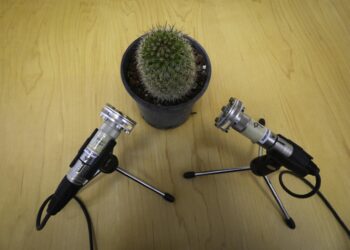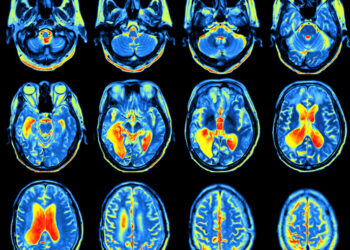Using these RNA-delivering particles, researchers hope to develop new treatments for cystic fibrosis and other lung diseases
Engineers from MIT and the University of Massachusetts Medical School have designed a new type of nanoparticle that can be delivered to the lungs, where it can carry messenger RNA that codes for useful proteins. With further development, these particles could offer an inhalable treatment for cystic fibrosis and other lung diseases, according to the researchers. “This is the first demonstration of highly efficient delivery of RNA to the lungs in mice. We hope it can be used to treat or repair a number of genetic diseases, including cystic fibrosis,” says Daniel Anderson, a professor in MIT’s Department of Chemical Engineering and a member of the Koch Institute for Integrative Cancer Research and the Institute for Medical Engineering. and Science (IMES) from MIT. In a mouse study, Anderson and his colleagues used the particles to deliver mRNA that encodes the machinery needed for CRISPR/Cas9 gene editing. This could pave the way for the design of therapeutic nanoparticles that can cut and replace disease-causing genes.
Focus on the lungs
Messenger RNA has great therapeutic potential for treating a number of diseases caused by faulty genes. An obstacle to its diffusion has so far been the difficulty of distributing it in the right part of the body, without off-target effects. Injected nanoparticles often accumulate in the liver, so several clinical trials are underway evaluating potential mRNA-based treatments for liver disease. RNA-based COVID-19 vaccines, injected directly into muscle tissue, have also proven effective. In many of these cases, the mRNA is encapsulated in a lipid nanoparticle, a fatty sphere that protects the mRNA from premature breakdown and helps it enter target cells. Several years ago, Anderson’s lab sought to engineer particles that could better transfer the epithelial cells that make up most of the lining of the lungs. In 2019, his lab created nanoparticles capable of transporting mRNA encoding a bioluminescent protein to lung cells. These particles were made of polymers instead of lipids, which made them easier to aerosolize for inhalation into the lungs. However, further work needs to be done on these particles to increase their potency and maximize their usefulness. In the new study, the researchers set out to develop lipid nanoparticles capable of targeting the lungs. Particles are made up of molecules that contain two parts: a positively charged head group and a long lipid tail. The positive charge of the head group helps the particles interact with the negatively charged mRNA and helps the mRNA escape from cellular structures that engulf the particles once it enters cells.
The lipid tail structure, on the other hand, helps the particles pass through the cell membrane. The researchers identified 10 different chemical structures for the lipid tails and 72 different headgroups. By examining different combinations of these structures in mice, the researchers were able to identify which ones they had more likely to reach the lungs.

Efficient delivery
In further tests on mice, the researchers demonstrated that they could use the particles to transport the mRNA encoding the components into the lung cells of the animals. CRISPR/Cas9 designed to take out a genetically encoded stop sign. When the stop signal is removed, a gene for a fluorescent protein is activated. Measuring this fluorescent signal allows researchers to determine the percentage of cells that have successfully expressed the mRNA. After a dose of mRNA, the researchers found that about 40% of lung epithelial cells had been transfected. The transfection it is the process of introducing exogenous biological material into eukaryotic cells, mostly mammalian. The insertion of genetic material is more frequent, usually including DNA and siRNA, but, in general, proteins (such as antibodies, for example) can also be transfected. Two doses they brought the level to more than 50% and three doses at 60%. The most important targets for the treatment of lung diseases are two types of epithelial cells, called club cells and hair cells, and each of these are approximately 15% transfected. “This means that the cells we have managed to modify are indeed the cells of interest for lung disease,” Li explains. “This lipid may allow us to transport mRNA in the lung much more efficiently than any other transport system described so far.”
Furthermore, the new particles break down quickly, allowing them to be cleared from the lung within days and reducing the risk of inflammation. The particles can also be administered multiple times to the same patient if repeated doses are needed. This gives them an advantage over another mRNA delivery approach, which uses a modified version of harmless adenoviruses. These viruses are very effective at delivering RNA, but cannot be repeatedly administered because they induce an immune response in the host. To deliver the particles in this study, the researchers used a method called intratracheal instillation, which is often used as a way to model drug delivery to the lungs. Now they’re working on making nanoparticles more stable, so they can be aerosolized and inhaled with a nebulizer. The researchers also plan to test the particles to deliver mRNA that could correct the genetic mutation found in the gene that causes cystic fibrosis in a mouse model of the disease.






